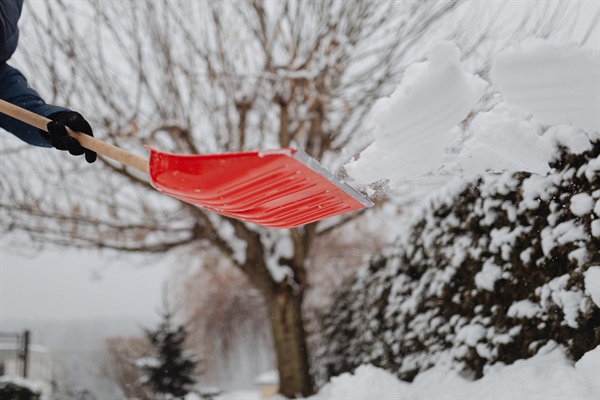
Ten shoveling safety tips from Phil Silverio, PT, DPT, OCS
Winter has arrived, and with it comes the inevitable chore of shoveling snow. As a physical therapist, I've seen my fair share of injuries caused by improper shoveling techniques. Snow shoveling can be very stressful to the body in a very short period of time.
To help you stay safe and injury-free this winter, here are some shoveling safety tips:
Warm Up Before Digging In:
Warming up your muscles reduces the risk of injury, so bundle up in layers to keep your body warm. If you can, perform light aerobic activity such as walking or jumping jacks for about 10 minutes before grabbing that shovel.
Use Your Legs, Not Your Back:
Instead of lifting heavy loads of snow with your back, use your leg muscles to push the snow away. This reduces the strain on your lower back.
Bend at Your Hips and Knees:
When shoveling, maintain a proper stance by bending at your hips and knees, not your back. This distributes the workload to your stronger leg muscles and minimizes stress on your spine.
Shovel Frequently:
Shovel more frequently throughout a storm rather than waiting for a massive snow buildup. This reduces the total weight of snow you'll be moving in a single session, making the task more manageable. Plus, freshly fallen snow is much lighter than snow that’s started to melt or has been compressed by cars or plows.
Timing is Everything:
When it comes to snow, the best rule of thumb is to go slow. Take breaks, and don’t start shoveling right after eating, smoking, or consuming caffeine, to avoid extra stress on your heart.
Take Small Loads:
Shoveling small loads of snow at a time can prevent excessive strain on your muscles and shoulder injuries. Pace yourself and avoid trying to move large amounts of snow in one shovelful.
Wear Proper Footwear:
Falls are common in snowy and icy conditions. Choose boots with a good grip to prevent slipping on icy surfaces. If unsure of the terrain or what is underneath the snow, take small steps – like a penguin - to steady your footing.
Stay Hydrated:
Dehydration is not exclusive to warm weather. Winter activities and bundling up in layers can cause you to lose fluids. Hydrate adequately before, during, and after shoveling to keep your body functioning optimally.
Listen to What Your Body is Telling You:
Stop shoveling immediately if you experience shortness of breath, chest pain, or dizziness. These symptoms could indicate a serious health issue, and seeking prompt medical attention is crucial.
Leaf the Shovel Behind:
Embrace alternative methods to traditional shoveling. Utilize ice-melting materials to minimize the need for heavy shoveling. Invest in a snow blower for larger snow removal tasks, sparing your muscles from excessive strain. Although using a backpack leaf blower to clear light snow might sound silly or unconventional, it can be effective and easier on your body.
Remember, the goal is to clear your walkways and driveways without compromising your health. By incorporating these shoveling safety tips into your winter routine, you can enjoy the snowy season with less worry about aches, pains, or injuries. Stay safe, stay warm, and happy shoveling!
This content is for educational purposes only and is meant to provide general information. It is not a substitute for professional medical advice, diagnosis, or treatment. Always consult your healthcare provider with any questions or concerns about your health. In case of a medical emergency, contact your doctor or call 911 right away.


